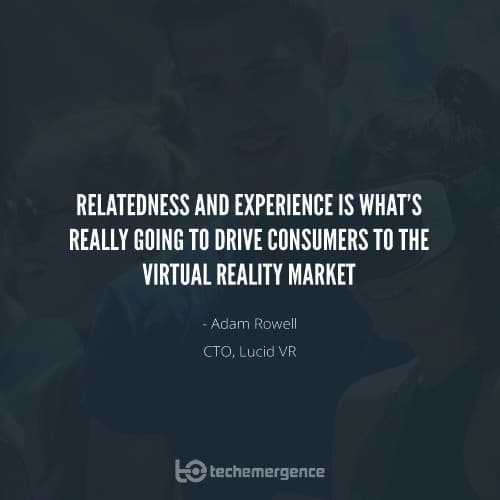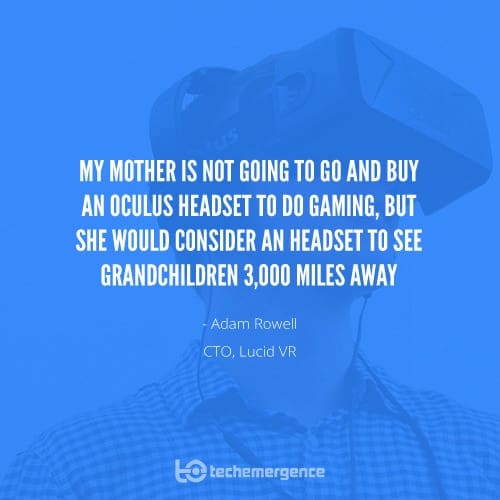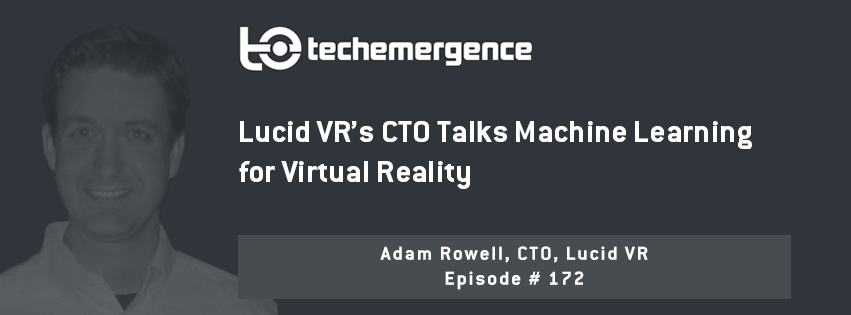Episode Summary: Artificial intelligence (AI) and virtual reality (VR) are often seen as different trends, but there is a lot of overlap in these areas, where you might not expect. Lucid VR’s CTO Adam Rowell speaks today about how AI plays a role in making VR work, augmenting the accuracy of images and making a more immersive and convincing experience for users. Rowell also touches on non-gaming VR apps that he and his company are excited about launching in the future.
_______
Expertise: Advanced analytics, electrical engineering, computer vision, and machine learning
Recognition in Brief: Adam Rowell is CTO of Lucid VR, a virtual reality product manufacturer using stereoscopy (3D imaging), a technique for enhancing the illusion of depth with binocular vision, to capture immersive images and videos. After receiving a B.S. and an M.S. in Electrical Engineering from Tufts University, Rowell went on to work as a software engineer at MathWorks and an instructor at Stanford University. He then went on to receive his Ph.D. from Stanford University in Electrical Engineering in 2012, before joining Exponent, Inc. as a senior associate; while at Exponent, Rowell was twice deployed as a civilian contractor to support military radar systems.
Current Affiliations: CTO of Lucid VR; Manager of Advanced Analytics at Maxim Integrated

Interview Highlights:
(1:08) The intersection of VR and computer vision…I don’t think that most people see much of a cross-over between machine vision to VR, how do those intersect?
(3:05) What you’re saying is that, in order to have all the factors and features align so that (VR) feels immersive and feels real and responds as it really would in the real world, in order to calibrate to that…you’ll need to adjust for that with algorithms – how does that work?
(7:03) Because there’s slight differences, do essentially all VR headset makers have to factor for variants in wear and tear and still being able to calibrate the device to fight warp?
(9:15) You folks are not necessarily moving in the gaming direction; when you set out to create this product, what were the trends that you saw in VR?
(11:34) You’re touching on something that might appeal to the lay person, non-gamer user who might not even be a techie…do you see that relatedness facet as what draws in that next wave of folks after the gaming crowd?
(15:38) How do you see some of that manifesting, say five years from now, thinking about the future and where you’re going to bring this technology – where might society be, what might be some of the shifts?
(20:38) What have you had to do to take complex technical topics and simplify them in ways to really garner interest from investors, what lessons have you learned that might transfer to other folks?



















